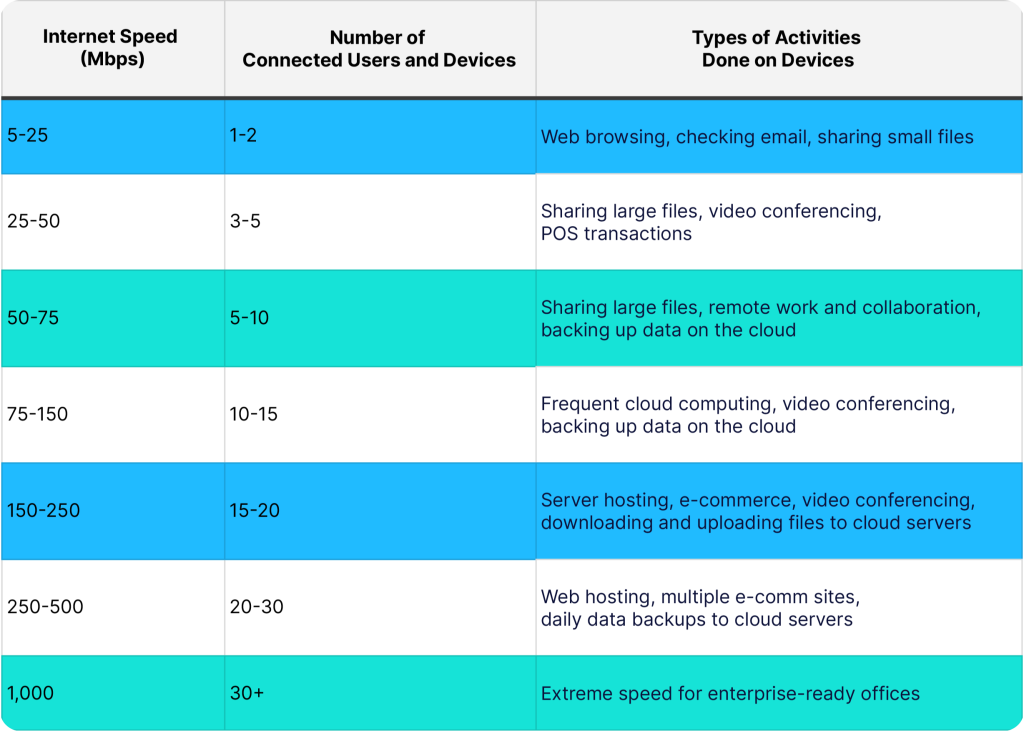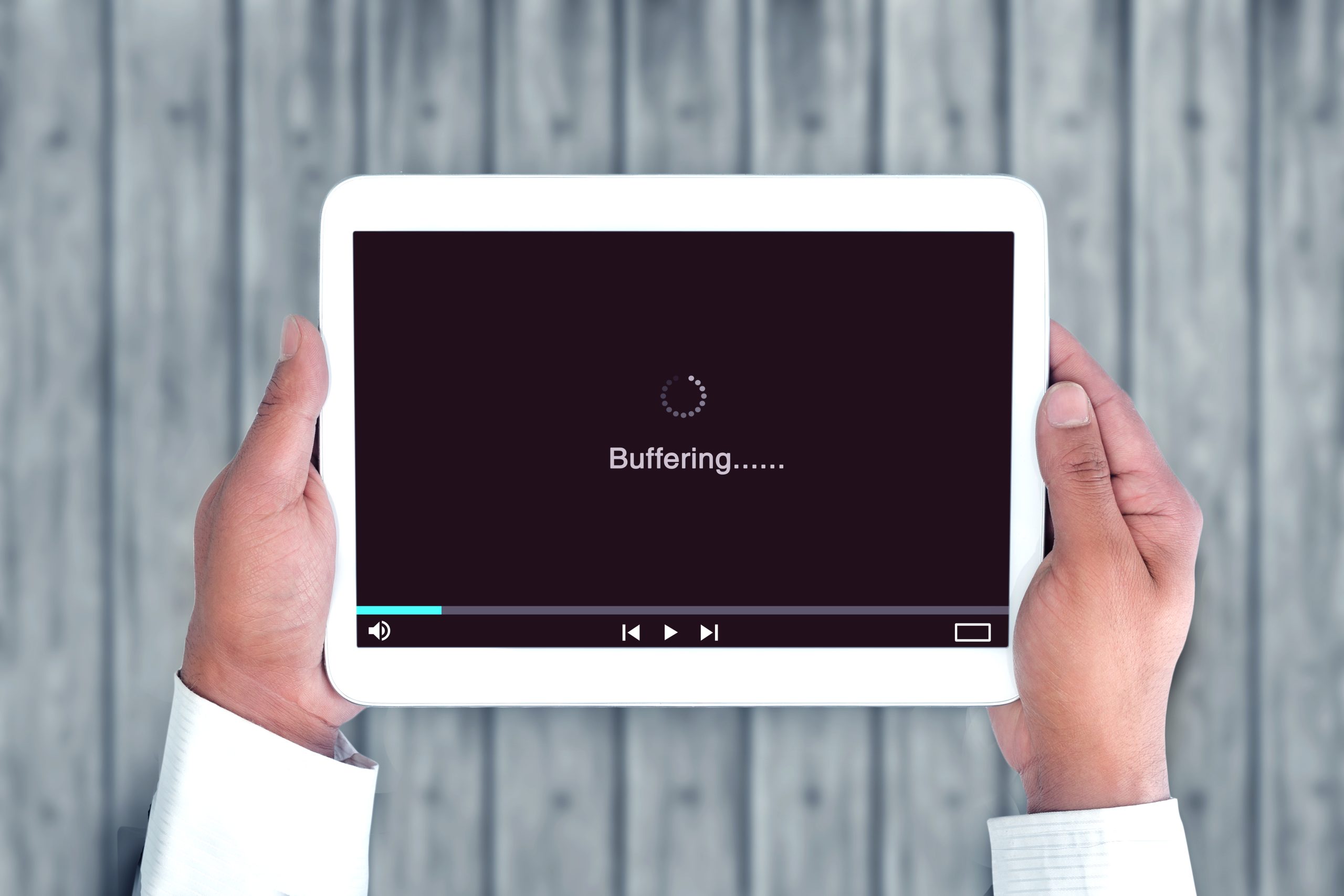“Internet speed” is talked about all the time, but it’s such a complex topic. For one, there’s a difference between the internet and WiFi, which we’ve discussed on the Meraki Go blog because the two tend to get conflated. Then there’s the difference between download and upload speed. For some reason, download speed is promoted all the time whereas very little attention is given to upload speed. This is surprising considering how much of our hybrid school and work life now depends on the latter.
Internet speed can be affected by a number of things, and it can be impacted further if you’re accessing the Web through WiFi. Let’s take a closer look at it all so you can get a greater understanding in order to determine and maintain the ideal internet speed for your business.
What is internet speed?
Internet speed refers to how fast data travels from the World Wide Web to your devices, whether wired (such as a desktop computer) or wireless (such as phones). All the pages you browse, images you see, or music you listen to on the Web comes to you in small packets of data. And how fast these packets move on the network is measured in Megabits per second (Mbps).
What is the difference between internet speed and bandwidth?
Internet speed and bandwidth are related, but there’s a distinct difference between them. Bandwidth refers to how much data can be uploaded or downloaded to your computer, whereas internet speed refers to how fast that data can be uploaded or downloaded on your device.
Going one further, broadband is defined as the transmission of wide bandwidth data over a high-speed internet connection that is always on. It’s like a multi-lane freeway of data. This is in sharp contrast to the early days of dial-up, which was more like a slow single lane road. According to the Federal Communications Commission (FCC), broadband internet has a minimum download speed of 25 Mbps and a minimum upload speed of 3 Mbps. Broadband provides high-speed internet access via multiple types of technologies, including fiber optics, cable, digital subscriber lines (DSL), wireless, and satellite.
What’s the difference between download and upload speeds?
Download speed tends to be what we hear about the most, especially from our Internet Service Providers (ISPs) when they promote their various packages to us. In their defense, there is a reason. Downloading dominates what we use the internet for, from streaming TV and music to viewing this web page.
However, upload speed is equally important. It has become even more important in this age of hybrid work. Upload speed determines how fast you can send data from your device to the internet. This includes uploading documents, pictures, and videos which we all do for school and work. Upload speeds are also essential to social media, online gaming, video conferencing, and Voice over Internet Protocol (VoIP) calling.
Though the FCC currently considers any upload speed of 3 Mbps as broadband, there’s congressional pressure – bipartisan, no less – to increase that minimum to correspond with the demands of today’s technology. For example, Webex recommends a minimum of 5 Mbps for their video meetings, and similar services have the same recommendations and requirements. Because of this, CNET has declared that 5 Mbps (rather than 3 Mbps) is what the FCC should be promoting because that upload speed works for everything from video conferencing to gaming. At least for the moment.
So when you’re going through all the plan and package options with your ISP, remember your goal should not just be an exceptional download speed. You should also focus on getting a great upload speed as well.
How fast does my small business internet need to be?
Let’s start with two words – usage matters. The internet speed your business needs depends on the following three factors:
- Number of users
- Number of devices
- Number and type of activities being done on those devices
“Basic” service is generally not going to get the job done when it comes to your business. That level of service is only going to be acceptable if you have the lightest possible use, like one person on one device checking email or listening to music. Even the smallest of businesses are likely going to have four or more users (you, your employees, your customers) and/or devices (phones, computers, point-of-sale system). You might also participate in video meetings, stream 4K video, or transfer large files. Any of this activity means you’ll need to upgrade to “advanced” service speeds.
The following is a chart that can help you determine the internet speed you might need for your business:

What factors impact internet speed?
There are a number of ways to optimize your internet speed. First, make sure the plan from your ISP gives you the speed you think it does. Connect your computer to your modem with an ethernet and then run a speed test (this speed test is backed by Google). If it’s not reaching the download and upload speeds you’re paying for, it’s time to make a call to your ISP. In addition, your provider and plan may have a data cap – if you approach it, they tend to slow your internet down – so that’s something else to explore.
Another thing to be aware of is that newer devices will have faster internet speeds. There is a significant difference between the capability of a computer or phone from 2006 versus one from today. Xfinity offers a chart that shows you the difference between them.
Beyond this, there are five ways you can troubleshoot and improve your internet speed:
- Restart your equipment
- Sometimes just restarting your computer, modem, or router will help clear a fatigued machine and get things back to normal.
- Update your software
- If you’re not someone who has set your software to update automatically, it may be time to do it manually. It’s important to always be using the most current operating system as well.
- Clear your cache
- Accumulated data can weigh down your connection, so clear your browsing history and cache if you haven’t done it in a while.
- Shop for a new ISP
- Though options for a new provider might be limited in your area, it never hurts to explore other options to make sure you have the best possible plan.
If you actually find your internet is running well, you may need to check your WiFi to improve your speed. We’ve explored ways to optimize your WiFi signal here on the blog, which includes being as close to your router as possible and removing any obstacles you can. In addition, you should disconnect any unused devices that are tapping into your WiFi. If you want to disconnect everything in your network all at once, just change your WiFi password. You’ll then log back into the devices you absolutely need and leave off all the ones you’re no longer using.
Hopefully this all gives you a better sense of internet speed and ways to improve your experience. Yet another way is to incorporate Meraki Go into your business. Our products give you reliably fast internet by allowing you to create separate networks for your employees and your customers. You can also set bandwidth limits so no one negatively impacts your business’ internet speed. Your preferred services – from your point-of-sale (POS) system to your music – will always be on. At Meraki Go, we know the importance of upload and download speeds, but we also never stop working to keep your network stable and secure.

Visit the Meraki Go site to learn more about our intuitive and innovative solutions that support small businesses.
SOURCES:
AT&T
Business Insider
Business.org
Cisco
CNET
FCC
HighspeedInternet.com
Pew Research Center
Population Reference Bureau
Verizon
Webex
Xfinity





